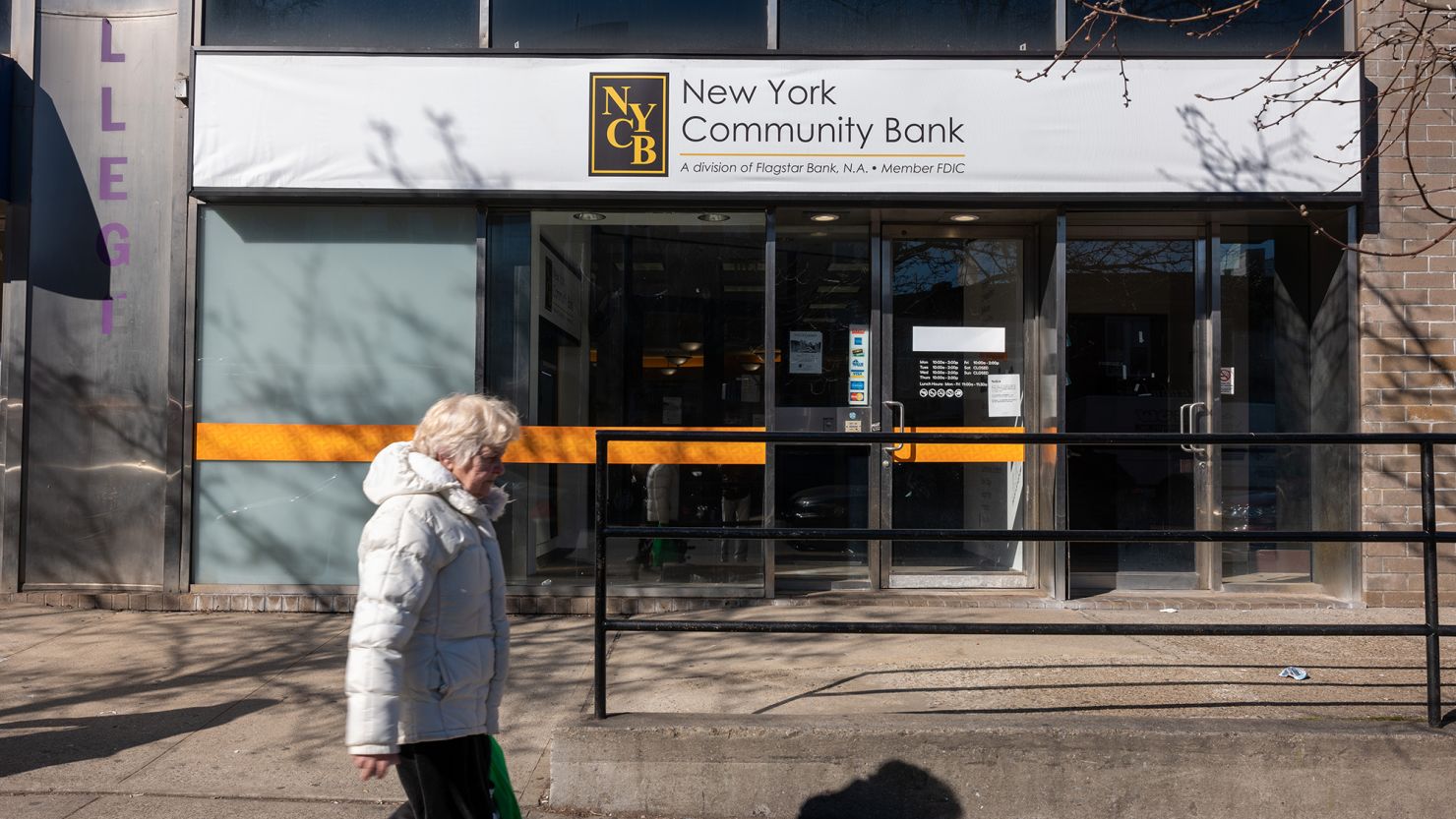Editor’s Note: A version of this story appeared in CNN Business’ Nightcap newsletter. To get it in your inbox, sign up for free, here.
With the help of a billion-dollar cash infusion and the market-soothing arrival of former government officials, New York Community Bank has come back from the brink.
But it’s not out of the woods yet. And some experts say NYCB is not merely an isolated hiccup for a single lender that got out over its skis.
The trouble at NYCB — which has sent its already battered shares on a wild ride this week — is putting a spotlight on how America’s banks manage (or fail to manage) risks to their balance sheets.
“What is the fundamental problem in the US banking system? Ultimately, it’s very high leverage,” Tomasz Piskorski, a finance professor at Columbia Business School, tells me. “A typical bank in the US — and there’s actually not much variation, whether it’s big, whether it’s small — is about 90% debt-funded.”
In other words, if you’re a bank with $100 million of assets, $90 million of that is debt and $10 million is equity. That means even a relatively modest decline in the value of your assets can technically push you into insolvency, especially if depositors decide to yank their money out, Piskorski explains.
Even a year after that exact thing happened — Silicon Valley Bank failed after depositor demand eclipsed the value of its assets — regulators haven’t addressed the core leverage issue.
Piskorski credits regulators for stopping the bleeding last year, but they “wanted to kick the can down the road and hope that in a year, which is now, the interest rate will be substantially lower, and [that] will re-inflate the asset values.”
Spoiler alert: Interest rates only went up as the Fed continued to fight inflation.
So, what can regulators do about it now?
The most obvious answer is one the banking industry hates: Increase the amount of money a bank is required to hold in reserve.
And when I say hates, I mean down to the bones. Earlier this week, while testifying before Congress, the Federal Reserve chief Jerome Powell got an earful from Republicans on a package of new banking regulations, known as “Basel Endgame III,” that would require banks to hold more capital.
The gist of bankers’ hate is that requiring them to stow away more money leaves them with less profit. And their go-to argument against such regulations is that they force banks to curtail loans to customers, hurting folks in the real economy.
According to his research, conducted with three others and published by the National Bureau of Economic Research last month, modern banks finance only a third of all the lending to households and businesses. The rest is handled by non-bank institutions often called “shadow banks,” which are far less regulated but much better-capitalized in order to protect themselves because, largely, they don’t have the same access to taxpayer-funded safety nets that federally insured banks do.
“That view is incorrect,” Piskorski said flatly.
Or at least, it is outdated.
The upshot: Despite the banking industry’s protest, banks can handle much higher capital requirements (at least, according to Piskorski et al).
“Banking is risky business because of high leverage … Going forward, it would be nice if regulators — maybe once things stabilize more — started addressing the fundamental root of this problem, which is the extent of risk-taking by banks.”











